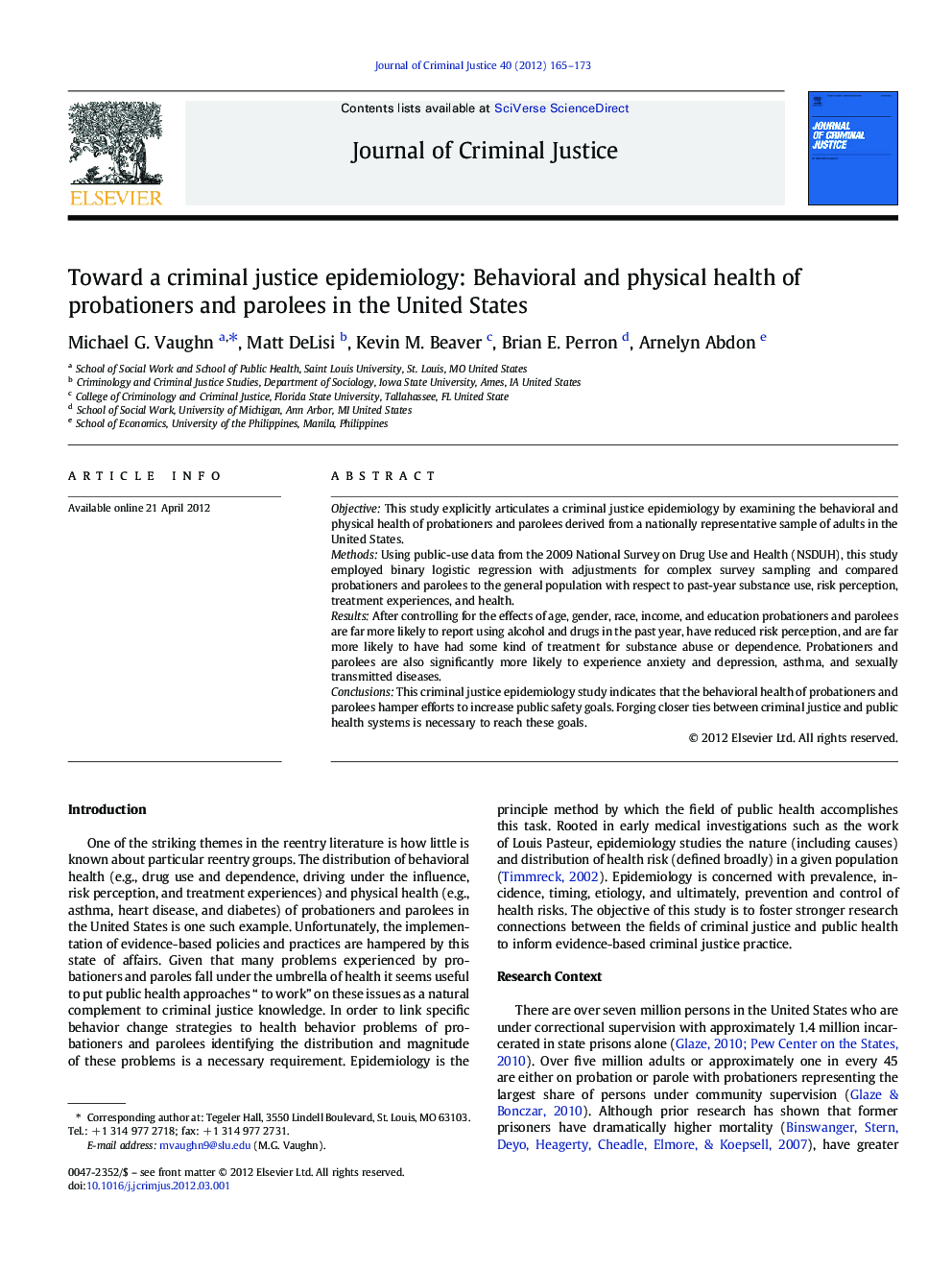| Article ID | Journal | Published Year | Pages | File Type |
|---|---|---|---|---|
| 882863 | Journal of Criminal Justice | 2012 | 9 Pages |
ObjectiveThis study explicitly articulates a criminal justice epidemiology by examining the behavioral and physical health of probationers and parolees derived from a nationally representative sample of adults in the United States.MethodsUsing public-use data from the 2009 National Survey on Drug Use and Health (NSDUH), this study employed binary logistic regression with adjustments for complex survey sampling and compared probationers and parolees to the general population with respect to past-year substance use, risk perception, treatment experiences, and health.ResultsAfter controlling for the effects of age, gender, race, income, and education probationers and parolees are far more likely to report using alcohol and drugs in the past year, have reduced risk perception, and are far more likely to have had some kind of treatment for substance abuse or dependence. Probationers and parolees are also significantly more likely to experience anxiety and depression, asthma, and sexually transmitted diseases.ConclusionsThis criminal justice epidemiology study indicates that the behavioral health of probationers and parolees hamper efforts to increase public safety goals. Forging closer ties between criminal justice and public health systems is necessary to reach these goals.
► This study explicitly articulates a criminal justice epidemiology. ► Probationers and parolees report high substance use and reduced risk perception. ► Depression, asthma, and sexually transmitted diseases are relatively common. ► Behavioral health status hamper's efforts to increase public safety.
